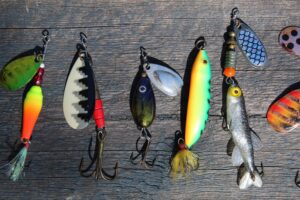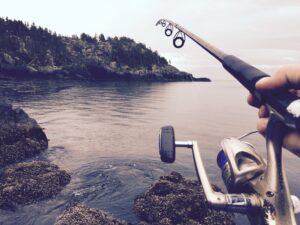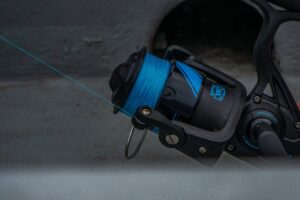Coarse fishing is a popular angling pursuit that requires a well-stocked Coarse Fishing Tackle box with various essential items beyond the basic line, rod, and reel. These additional tackle pieces are crucial for enhancing your fishing experience and increasing your chances of success. In this article, we will explore the must-have coarse fishing tackle items, including hooks, floats, weights, landing nets, and more, to ensure you are fully prepared for your next coarse fishing adventure.
Table of Contents
Coarse Fishing Tackle
Hooks
Hooks are an indispensable part of any angler’s tackle box. They come in different sizes and styles, and choosing the right hook depends on the fish species, bait used, and fishing technique. For coarse fishing, hooks like the wide gape, barbless, or micro barbed hooks are commonly used. Ensure you have a selection of hooks in different sizes to accommodate varying bait presentations and target different fish species.
Floats
Floats, also known as bobbers, play a crucial role in coarse fishing by indicating when a fish takes the bait. They come in various shapes and sizes, including wagglers, quill floats, and pole floats. Different floats are suited for specific fishing techniques and water conditions. Experiment with different float styles to find the one that provides optimum visibility and stability for your coarse fishing needs.
Weights
Weights, such as split shots, bomb weights, or sinkers, are used to add weight to the line and aid in casting and controlling the bait’s depth. The size and type of weight will depend on the fishing technique, target species, and water conditions. Carry a variety of weights to adjust and fine-tune your presentation as needed.
Feeders
Feeders are a popular and effective tool used in coarse fishing to attract fish to a specific area and present bait in a controlled manner. They come in various shapes, sizes, and designs, offering versatility for different fishing techniques and target species. Here’s an overview of feeders and their applications:
- Open-End Feeders – Open-end feeders, also known as block-end or cage feeders, are widely used in coarse fishing. They feature a mesh or perforated design that allows the bait to disperse into the water, attracting fish to the feeding area. Open-end feeders are commonly filled with groundbait, pellets, or other loose bait. They are particularly effective for species like bream, tench, and carp that feed on the bottom.
- Method Feeders – Method feeders are specialized feeders that contain bait within a moldable framework, such as a mesh or a solid frame. Anglers can mold the bait around the feeder, creating a compact and concentrated bait presentation. Method feeders allow for accurate casting to a specific spot, ensuring that the bait stays intact during the cast and reaches the desired area. They are commonly used in match fishing and carp fishing, attracting fish to the hook and keeping them in the feeding area.
- Groundbait Feeders – Groundbait feeders are designed to hold and release groundbait, a mixture of various ingredients such as breadcrumbs, particles, and flavorings. These feeders are ideal for dispersing a consistent stream of attractants into the water, creating a feeding zone that keeps fish actively searching for food. Groundbait feeders are widely used in river fishing and stillwater fishing for species like roach, bream, and barbel.
- Pellet Feeders – Pellet feeders are specifically designed to hold and release pellets, which are compressed and often flavored baits made from various ingredients. Pellet feeders can be filled with different sizes of pellets, allowing anglers to tailor their bait presentation to the target species. They are commonly used in carp fishing, as well as for species like bream and tench that are attracted to pellets.
Swivels and Beads
Swivels and beads are small but crucial components in coarse fishing rigs that serve specific purposes. These tackle items are often used together to enhance the effectiveness of rigs, improve presentation, and reduce line twist. Here’s an overview of swivels and beads and their roles in coarse fishing:
- Swivels – Swivels are small, barrel-shaped components with rotating parts that prevent fishing line from twisting or tangling. They are typically made of metal or plastic and feature a ring at each end for attaching other tackle components. Swivels are essential for various fishing rigs, especially those involving a rotating or spinning motion, such as when using a spinner or employing a method feeder. They allow the mainline and leader line to rotate freely, minimizing the risk of line twist and enabling a natural bait presentation.
- Beads – Beads are small, spherical or cylindrical components made of materials like plastic or rubber. They are often used in conjunction with swivels to create a buffer between different rig components. Beads act as shock absorbers, protecting the knot and reducing the risk of line damage caused by friction with other components. They can also serve as attractants, providing additional visual and sound stimulation to entice fish.
Landing Nets
A landing net is an essential tool for safely and efficiently landing fish. Coarse fishing landing nets typically have a wide, fish-friendly mesh and a sturdy handle for easy manoeuvrability. The size of the net should be appropriate for the expected size of the fish you are targeting.
Disgorger or Forceps
A disgorger or a pair of forceps is essential for safely removing hooks from the fish’s mouth. It helps minimize harm to the fish and allows for quick and efficient hook removal. Choose a disgorger or forceps that match the size of fish you plan to catch.
Tackle Box or Bag
A tackle box or bag is crucial for organizing and storing your coarse fishing tackle. It keeps your equipment easily accessible and protected from damage. Look for a tackle box with compartments or trays to keep hooks, weights, and other small tackle items organized and secure.
Bait and Baiting Tools
Coarse fishing often involves using a variety of baits, including live bait, such as worms or maggots, or prepared baits like boilies, pellets, or sweetcorn. Additionally, having baiting tools like a baiting needle or baiting spoon can facilitate the presentation and effective use of different baits.
Bank Sticks and Rollers
Bank sticks and rollers are additional tackle items that are commonly used in coarse fishing, particularly when fishing from the bank or shoreline. These tools provide stability and convenience in various fishing scenarios. Here’s an overview of their functions:
- Bank Sticks – Bank sticks are long, sturdy rods typically made of metal or carbon fiber. They are inserted into the ground or mud at the water’s edge to provide a stable support for rod rests, rod pods, or bite alarms. Bank sticks allow you to position your rods at the desired height and angle, ensuring a secure setup while fishing. They come in various lengths and designs to accommodate different fishing styles and terrains.
- Rollers – Fishing rollers, also known as rod rest heads or rod supports, are used to rest and support fishing rods during fishing sessions. They feature smooth, rotating surfaces that allow the fishing rod to move freely when a fish takes the bait or during line movement caused by wind or currents. Rollers reduce resistance on the line, preventing it from snagging or causing unnecessary tension on the rod. They are particularly useful when targeting larger fish that may take strong runs.
Summary
Coarse fishing tackle encompasses a wide range of items beyond the basic line, rod, and reel. Hooks, floats, weights, landing nets, and other essential tackle pieces play crucial roles in enhancing your coarse fishing experience and increasing your chances of success. By investing in quality tackle and ensuring you have a well-stocked tackle box, you’ll be fully prepared for the diverse fishing scenarios and target species encountered in coarse fishing.
Remember to select the appropriate tackle items based on the fishing technique, target species, and water conditions you’ll be facing. By equipping yourself with the right coarse fishing tackle, you’ll be ready to tackle the waters and enjoy the thrill of reeling in those prized coarse fish species. Happy fishing!




